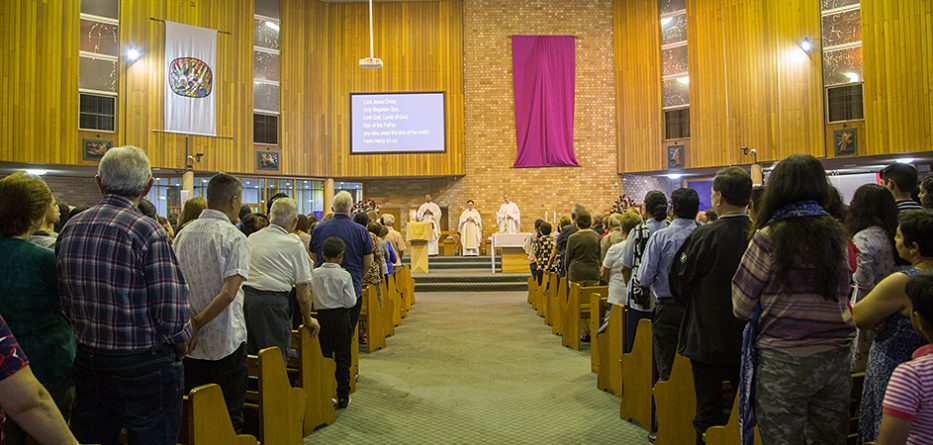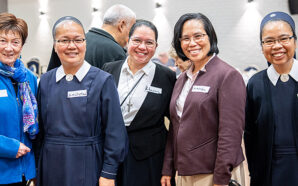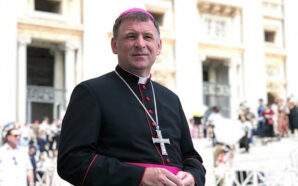“The Pastoral Conversion of the Parish Community in the Service of the Evangelisation of the Church”: A Brief Reflection on a Vatican Instruction issued by the Congregation for Clergy on 27 June 2020
A Surprise
Out of the blue and without any earlier notification, the Vatican Congregation for the Clergy released, on 29 June 2020, a document with the title ‘The pastoral conversion of the Parish in the service of the evangelising mission of the Church’. Bishops, priests and the faithful had not anticipated this Vatican instruction and surely were caught by surprise. It seems that the document was not preceded by an in-depth consultation process, as it was done, for example, in the recently published ‘Vademecum’ by the Congregation for the Doctrine of the Faith (16 July 2020) on the dealing with cases of child sexual abuse. Because of the lack of consultative discussion, there will be continued criticism against the document issued by the Congregation for the Clergy. For some, this document represents a barrier for the renewal process since it highlights the inimitable liturgical importance of the priest and the non-delegable governing role of the clergy. The critics were directed especially against the second part of the Instruction. According to the majority of the German episcopate and some theologians, the rigid canonical content of the Instruction betrays its heading which calls for a pastoral conversion.
I do not share such a pessimistic reading of the document. Instead, I have opted for a critical approach that values the good and criticises the bad. From here, I would like to make a connection between the Vatican document and the upcoming Plenary Council in Australia.
The Eucharist, Mercy and the Parish’s Pastoral Conversion
A critical assessment demands a fair analysis of the Instruction. It must make an effort to understand the overall goal and intention of the document. Methodically, the Instruction begins with the universal view before it moves to the description of a concrete situation. Hence, theology precedes pragmatism. Theologically, the document argues that the joyful encounter with Christ is the chief objective of the Christian life. Pope Francis serves here as a most recent authoritative witness. The Instruction quotes frequently from the Pontiff’s Apostolic Exhortation ‘Evangelii Gaudium’ (EG). However, the encounter with Christ does not only bring joy; but it also disturbs and troubles the conscience since the joy of the encounter is compared to the bleak and desolate reality of human existence.[1] The prospect of a savouring friendship with Christ is therefore the basis for conversion. While EG focusses much on the personal level of conversion, the Instruction goes a step further by calling for a pastoral conversion. Since a human person is a social being, she/he needs the support of a community. Hence, the importance of a Parish community is re-emphasised because it is through the Eucharist that the encounter with Christ is intensely actualised. As the Eucharist is the redemptive sacrifice of Jesus Christ, the high priest, the Eucharistic celebration demands the presence of a priest who through the ordination is configured to and acts in the person of Christ.
It is the Eucharist that makes the Church.[2] Since the Eucharist is the “source and summit of the life and mission of the Church,”[3] it also represents the centre of the life and action of the Parish community which “as a place of worship,” is “a sign of the permanent presence of the Risen Lord in the midst of His People.”[4] In this regard, the Parish is theological and interpreted as the territorial configuration to Christ.[5] Hence, the call for the pastoral conversion of the Parish community has is theological and spiritual foundation in the Eucharist: “The aforesaid missionary conversion, which naturally leads to a reform of structures concerns the Parish in particular, namely that community gathered around the Table of the Word and the Eucharist.”[6] It is evident that the Eucharistic communion (koinoia) leads to mission (diakonia). The Eucharist always includes a social dimension of charity. In this context, Pope Emeritus Benedict XVI wrote earlier: “We can thus understand how agape also became a term for the Eucharist: there God’s own agape comes to us bodily, in order to continue his work in us and through us … ‘Worship’ itself, Eucharistic communion, includes the reality both of being loved and of loving others in turn. A Eucharist which does not pass over into the concrete practice of love is intrinsically fragmented.”[7]
For Pope Francis, mercy is the instrument of the communion: “Living in communion with Christ is, therefore, anything but being passive and detached from daily life; on the contrary, it includes us more and more in the relationship with the men and women of our time, in order to offer them the concrete sign of mercy and of the attention of Christ.”[8] Because of the Eucharist, the Parish community is a visible sign and a territory of mercy. Indeed, the ‘culture of encounter’ is rooted in the compassion by which Jesus was moved at the sight of the wounded Samaritan. In the footsteps of Christ, the Parish becomes a place where solitude is overcome through solidarity and dialogical openness.[9] In the spirit of mercy, the Instruction invites the Parish community to be missionary and to reform its structures and ministries according to the demands of evangelisation of today.
The Changing Faces of the Parish Community
The Instruction accurately describes the rapid social and cultural changes and realities affecting the people’s sense of belonging to a confined place. Among the many signs of the times, the Instruction particularly identifies the increased mobility and the digital culture as the characteristics of the contemporary world.[10] These modern features have reshaped not only the traditional way of thinking, but also has altered the sense of space. Consequently, people are, therefore, “less associated today with a definite and immutable geographical context.”[11] The faithful are no longer attached to a parish but have become more and more ‘tourist’ worshippers travelling between parishes. As an example, the Parish of Mary Queen of the Universe in Florida registered on an Easter Weekend 35,000 mass attendees. The majority of worshippers attended the Parish’s service only after a visit to Disney World in Florida.[12] During the COVID-19 pandemic, the faithful can switch between the TV channels in the search for televised Masses that suit their time and taste. The data provided by Google Analytics for my Parish of Our Lady Queen of Peace in Greystanes indicates that during a live-streamed Mass, most of the viewers stayed for an average of 20 seconds during the homilies before they moved to other TV preachers.
The demographic and cultural changes demand an appropriate answer by the Church’s authority. In formulating a response to these matters, the Instruction refers to the encouraging and occasionally provocative statements of Pope Francis who dreams of a Church capable of transforming everything so that habits, styles, schedules, language use and any ecclesiastical structure become a channel that serves the evangelisation of today’s world more than self-preservation.[13] The age of mobility and digital communication has created a parish with a less committed congregation. In this regard, many responsibilities and ministries are often concentrated in the hands of a few generous parishioners.
The chief purpose of the Instruction is to overcome both, the self-referential conception of the Parish and the clericalisation of the pastoral. To preserve the manifold gifts of the Church[14] and to protect the faithful from being “clericalised,” the Instruction, therefore, repeats the doctrinal status[15] and canonical responsibilities of the Parish Priest. Contrary to some commentators of the Instruction, the intention of the Congregation of the Clergy was not to suppress the active participation of the lay faithful, but rather to preserve and foster the various responsibilities and services within the Parish community. In this regard, the Instruction states: “Consequently, the need to overcome a self-referential conception of the Parish or the ‘clericalisation of pastoral activity’ becomes apparent. When it is acknowledged that the state of the People of God ‘is that of the dignity and freedom of the children of God, in whose hearts the Holy Spirit dwells as in His temple,’ this inspires practises and models by which all the baptised, by virtue of the gift of the Holy Spirit and their infused charisms, become active participants of evangelisation, in the style and modality of an organic community, together with other Parish communities or at the diocesan level. In effect, the whole community, and not simply the hierarchy, is the responsible agent of mission since the Church is identified as the entire People of God.”[16]
Furthermore, the danger of an authoritarian clericalism that the critics have implied in the Instruction can be countered with the fact that not the Parish Priest but the Parish which has a legal status of a juridical person. Therefore, the bishop (parish priest) cannot simply change, merge, or abolish parishes or its structures. The Instruction exactly aims to prevent and bind the bishop to ‘constitutional’ criteria and procedures.
Accordingly, it is necessary to promote procedures and models by which all baptised people, by virtue of the gift of the Holy Spirit and the received charisms, actively, in accordance with the style and manner of an organic community, in the evangelisation with the other parishes taking in account the pastoral care of the diocese. Since the Church is not just a hierarchy, but the people of God, the entire community is responsible for its mission.
In no. 98-100, the Instruction lists significant ministries that can also be exercised by non-priests. Local bishops may consider the circumstances in their respective dioceses and “according to their prudent judgements,” creatively involve deacons, consecrated women and men and the lay faithful in ministerial duties, such as the celebration of the Word on Sunday and Holy Days of Obligation, the administration of Baptism, the celebration of marriage and funeral rites. In Australia, these opportunities have not been realised to the full. Perhaps, the upcoming Plenary Council might dedicate space to ponder these key activities in the life the Parish community. In this way, the participatory dimension of the Church’s life would not just be limited to administrative roles, but also would include a ‘sacramental’ aspect.
Some Points of Criticism
- The Instruction was given without any prior consultation and involvement of local authorities. Although it quotes much of Pope Francis’s teaching, it does not follow the Pope’s synodal concept.
- The document’s language ought to employ more appreciative language. The second part of the Instruction was written in the spirit of the Canon Law. It was focussed more on the question of rights: What are the rights of the Parish Priest? What can the lay faithful do and not do? Would it not be helpful if the Instruction uses language that encourages the People of God to be missionary collaborators? Such appreciative and encouraging words would surely underline the value of women and contribute to the healing of the wounds that women especially experience in the Church.
Fr Joseph Lam is the Assistant Priest at Our Lady Queen of Peace Parish, Greystanes.
[1] Instruction no. 3 and EG no. 49.
[2] Pope John Paul II, Ecclesia de Eucharistia, no 1: ‘The Church draws her life from the Eucharist. This truth does not simply express a daily experience of faith but recapitulates the heart of the mystery of the Church.’ See also Henri de Lubac, The Splendor of the Church (San Francisco: Ignatius Press, 1986), 134.
[3] LG no. 11.
[4] Instruction no. 7.
[5] Instruction no. 20.
[6] Instruction no. 6 and 22.
[7] Deus caritas est no. 14.
[8] General Audience held in Paul VI Audience Hall at the Vatican on Wednesday, 17 August 2016. For the full text, see http://www.giubileodellamisericordia.va/content/gdm/en/francesco/catechesi/2016-08 17Vaticanva.html
[9] Instruction no. 25f.
[10] Charles Taylor, ‘Two Theories of Modernity,’ in The Hastings Center Report 25.2 (1995), 24-33. According to Taylor, the age of mobility brought about the fragmentation of communal conceptions of the moral.
[11] Instruction no. 8.
[12] For further details, see https://www.npr.org/sections/thetwo-way/2014/04/20/305309064/the-florida-church-whose-worshipers-are-all-tourists.
[13] Instruction no. 5.
[14] Romans 12:4-11.
[15] For the doctrinal clarification of the presence of the priest for the validity of the Eucharistic celebration, see especially the Letter to Bishops of the Catholic Church on Certain Question Concerning the Minister of the Eucharist issued on 6th August 1983 by the Congregation for the Doctrine of the Faith.
[16] Instruction no. 8.








